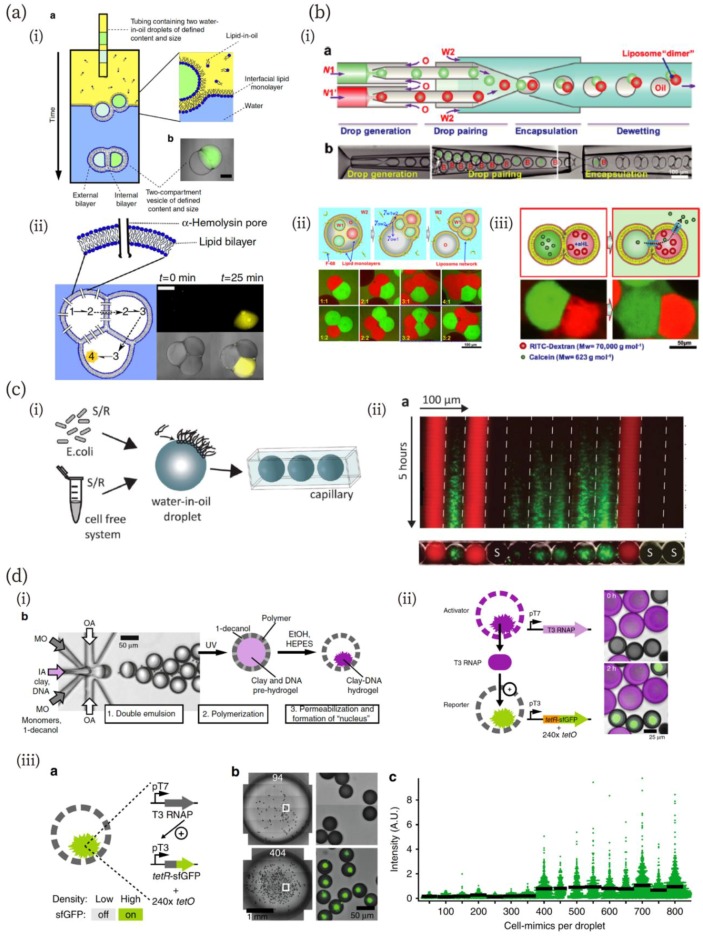Figure 3.
(a) Multi-compartment formation via the phase transfer of multiple droplets and cascadic chemical reaction in the compartment [86]. (i) Schematics of the fabrication method and a microscopic image of a multi-compartment vesicle. (ii) Three-step cascadic-chemical reaction in the multi-compartment. Scale bar in microscopic images: 250 µm. Reproduced with permission from [86]. (b) Multi-compartment GUVs and selective molecular release from them [87]. (i) Schematics and microscopic images of the fabrication process of the multi-compartments via dewetting of W/O emulsions. (ii) Schematics and microscopic images of the multi-compartments consisting of two, three, four, and five compartments. (iii) Size-dependent molecular release from the multi-compartment to an outer solution through alpha-hemolysin pores. Reproduced with permission from [87]. (c) Chemical communication between a cell-free system and bacteria [92]. (i) Schematics of the experimental system. (ii) A kymograph of a fluorescence microscopic image of chemical communication between cell-free and bacteria droplets. Reproduced with permission from [92]. (d) Quorum sensing (QS) of artificial cells [95]. (i) Microfluidic fabrication of artificial cells capable of gene expression in the nuclei. (ii) Protein exchanges between neighboring artificial cells. (iii) QS of artificial cells with fluorescence accumulation, depending on the artificial cell density. Reproduced from [95].

